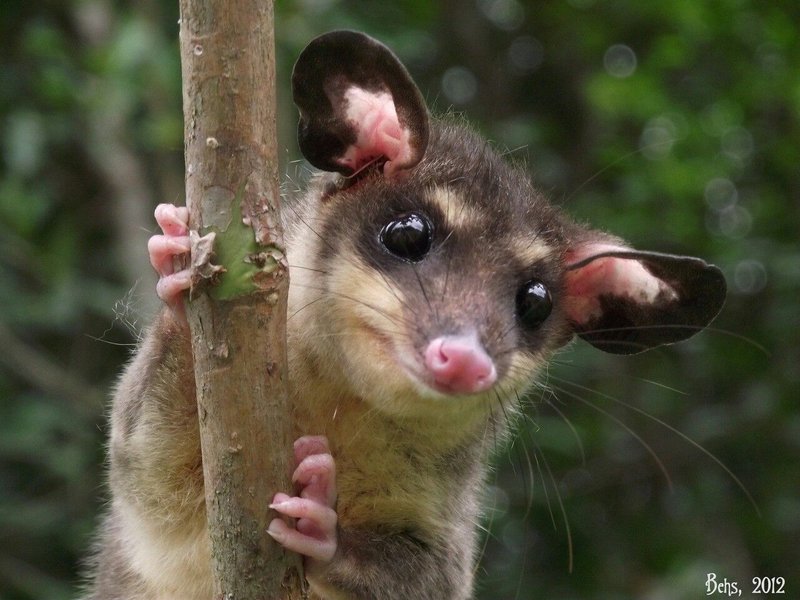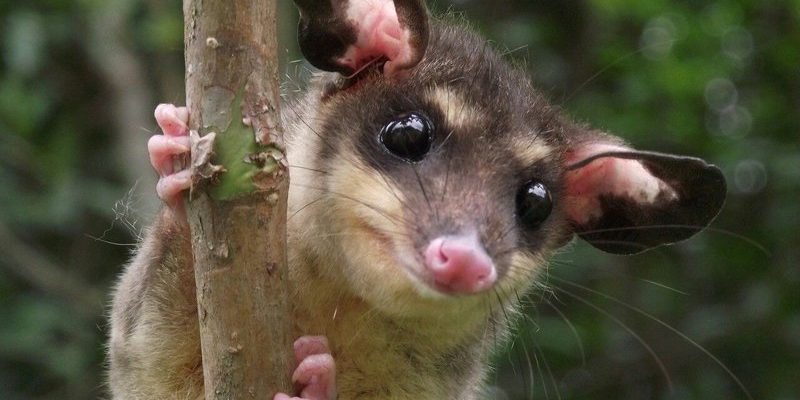
So, let’s dive into the world of animals similar to the yapok. By the end of this article, you’ll have a better understanding of these critters and how to distinguish one from another. Whether you’re a wildlife enthusiast or just someone who loves to learn, this journey will be both enlightening and fun. Plus, it might just inspire your next nature walks or wildlife watching adventures!
The Yapok: A Quick Overview
The yapok (Chironectes minimus) is a small marsupial that thrives in rivers, lakes, and wetlands across South America. With its webbed feet and water-resistant fur, this little guy is built for an aquatic life. The yapok isn’t just a good swimmer; it also has a unique pouch that allows females to carry their young while navigating through water.
What makes the yapok stand out is its distinct appearance. It has a long, pointed snout and big eyes that enhance its ability to see underwater. Its fur is mostly gray with some lighter patches, making it somewhat similar in appearance to its land-dwelling cousin, the common opossum. Understanding the yapok’s features gives us a solid foundation to explore animals that resemble it.
1. Common Opossum (Didelphis virginiana)
The **common opossum** is like the yapok’s land-based sibling. Found in North America, this marsupial has a broader diet and can adapt to various habitats. They’re known for their ability to play dead when threatened, which is a fascinating survival tactic.
To tell the common opossum apart from the yapok, note the differences in habitat and behavior. While the yapok loves water, the common opossum is more likely found in trees or on land. Visually, adults can weigh up to 14 pounds and have longer bodies compared to their aquatic cousins. In terms of appearance, common opossums have a more rounded snout, while yapoks have that signature pointed look.
2. Capybara (Hydrochoerus hydrochaeris)
Next up is the **capybara**, the largest rodent in the world, which also finds its home near water sources. These gentle giants can weigh around 150 pounds and are social animals that live in groups. You might see them lounging by the riverside or even swimming, as they are excellent swimmers.
While capybaras and yapoks both enjoy aquatic environments, their sizes set them apart immediately. Capybaras have a stocky, barrel-shaped body and a broader face. The yapok, on the other hand, is small and nimble, designed for darting through water with ease. Their social behaviors also differ; capybaras are usually found in groups, while yapoks are more solitary.
3. Nutria (Myocastor coypus)
Also known as coypu, the **nutria** is another semi-aquatic mammal. This large rodent originated from South America but has become widespread in North America and Europe. Nutria have webbed feet, similar to yapoks, which help them swim efficiently.
To differentiate nutria from yapoks, consider their size and tail. Nutria can weigh between 15 to 25 pounds, making them significantly larger than yapoks, which typically weigh around 3 to 4 pounds. Their tails are also long and rat-like, while the yapok has a shorter, fur-covered tail that’s not as prominent.
4. European Water Vole (Arvicola amphibius)
The **European water vole** is often mistaken for a rat. However, this small mammal is quite charming and enjoys life near water bodies. With a body about the size of a rabbit, water voles have dense fur and a round face that gives them an endearing look.
While both the yapok and the water vole are adapted to an aquatic environment, the water voles are more robust and have shorter limbs. The yapok’s slender frame and webbed feet make it more agile in water. Water voles also have a less pointed snout compared to the yapok, which can help in identifying them.
5. Platypus (Ornithorhynchus anatinus)
Moving on to a more exotic creature, the **platypus** is a unique animal that stands out with its duck-bill and webbed feet. Native to Australia, this monotreme is one of the few mammals that lay eggs. The platypus thrives in rivers and lakes, making it another fascinating example of aquatic life.
Despite their similarities, telling a platypus apart from a yapok is easy. Firstly, the size difference is notable, as the platypus can grow up to 20 inches long. Its bill and body shape are completely different from the yapok. Plus, platypuses have a flat tail used for swimming, which is not seen in yapoks.
6. Water Shrew (Sorex palustris)
The **water shrew** is a small but mighty mammal found across North America. Known for its sleek body and powerful swimming abilities, the water shrew is excellent at hunting in aquatic environments, much like the yapok. These creatures have adapted to life near rivers and streams, preying on insects and small aquatic animals.
The main difference is in size and appearance. Water shrews are much smaller than yapoks, typically weighing less than an ounce, and have a more elongated body shape. Their fur is also darker and denser, which helps them stay warm in cold water. When you think of the yapok, imagine a cute little swimmer with a cousin that’s a bit more mouse-like in shape!
7. Asian Water Monitor (Varanus salvator)
The **Asian water monitor** is a fascinating reptile often found near rivers and marshes in Southeast Asia. These large lizards are great swimmers and can grow over 7 feet long. They can dive underwater for extended periods and are often seen basking on riversides.
While both the water monitor and yapok share water-loving habits, their anatomical differences are striking. The water monitor has a long, muscular body and a scaly skin texture, in stark contrast to the yapok’s furry exterior. You won’t confuse these two creatures, as one is a mammal and the other a reptile!
8. American Mink (Neovison vison)
The **American mink** is a small, semi-aquatic carnivore known for its luxurious fur and graceful swimming skills. Found in North America, these sleek creatures are agile predators that feast on fish, frogs, and small rodents.
Minks and yapoks have similar habitats and both love water, but they differ in their lifestyle. Minks are solitary animals, while yapoks often come together to mate. Their size is another distinction; minks are typically larger, with slender bodies built for hunting. The yapok, with its rounded frame, focuses more on foraging.
Exploring the world of animals similar to the yapok reveals a rich tapestry of life that thrives in aquatic environments. Each creature we looked at has its unique adaptations and traits, making them fascinating in their own right. Whether it’s the common opossum’s ability to play dead or the capybara’s social nature, these animals share some similarities but also express nature’s creativity in different ways.
Next time you’re out exploring or watching wildlife, remember these differences. It’s a reminder that even in a diverse world, connections exist, and every creature plays an important role in its ecosystem. Just like the yapok, these animals remind us of the beauty and variety of life around us. So, dive in and enjoy the wonders of nature!

